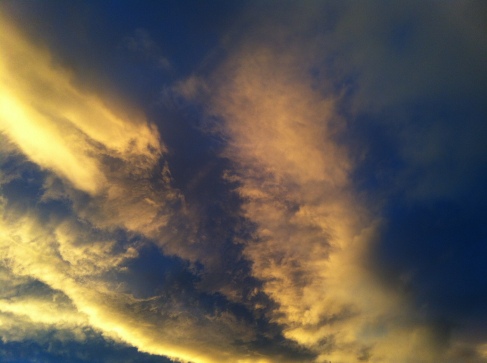The morning’s snow fog cloaks trees in ice, an eagle flies North, and the days of February blow forward. Is Spring training near?
Category Archives: seasonal sports
Observing Cloud for Training Wisdom
1. Clouds change shape but keep moving, albeit sometimes very slowly. We can too. It is one of the qualities of adaptive training among crazy-busy pressures that would stress us into inactivity.
2. Clouds transport water, a resource to the lives of others. Training our bodies and minds builds physical courage that can support other acts of generous, giving courage.
3. An otherwise bright white cloud can have very dark, very water-dense little clouds nearby (see the banner). Suppose you are in one of those small, dark, water dense clouds. You’re likely to see all grey, all gloom, and feel all wet. Yes, until a beautiful, white sunlit cloud expands and engulfs you and you find that many of your problems were perceived right there within your own tiny individual cloud. You also realized how much water you have to give among others.
4. Clouds get out in the other elements, indeed, bring them together within themselves, contribute to them. So do we when we train, exercise, work, compete, and apply our physical training to something worthwhile.
5. Clouds make their own view by starting out light, rising, gathering, then supplying. A thunderstorm or snow storm is quite an exciting gathering, maybe even a competition, with lightening clashes, the refreshing ozone, and every gathered cloud a part in that great event. Gatherings of clouds bring out the best in each.
6. Clouds have training partners that truly inspire them with their energy, warmth, and mastery at conducting the weather as if it were a symphony orchestra: Mr. Sun and his band the Stars.
7. What shape will your training take today?
Tensing and Releasing
Many know the relaxation technique of tensing the body’s muscles, head to toe, and releasing them, in a wavelike sequence.
It is a great relaxation technique, yet it is also a superb warming-mobility approach as well. As you well may know, static stretching of muscles without warming up, is now out.
Tensing muscles even more in their tighter states of unreadiness (i.e. when you feel tension binding your body, movement, and coordination), will bring the warming blood flow increase to the targeted muscle or muscle group. Relaxing then, the muscles loosen. Progressively, tensing again, and releasing tension again, brings yet more looseness and pliability to the muscles.
A good example to illustrate is that of leaning over to touch our toes, and stopping at the point of felt-tightness, hanging there a few moments. Feet are flat on the ground. From the ground, from feet through the lower back, including all hip girdle muscles, we tense all of our muscles that we can and hold that tension a few seconds. Then we release. We should then feel our fingertips and entire upper body descend more easily from the waist toward the ground, feeling a bit looser. Repeat the process and see how low you can go.
Remember to breathe, either exhaling or inhaling during tension and the opposite during release, and keep that going. Shake out your body when done.
If you feel dizzy doing this, touch or grab a fixture for balance and slowly recover the upright position. An alternative is to touch the ground, and if loose enough to sit down, sit down and rest until the dizziness is over. If the dizziness is major, you feel you are going to faint or blackout, or if you repeatedly get dizzy doing this, stop exercise and schedule a physical with your doctor and tell your doctor about your experience.
Otherwise, think of the many formerly static stretches you used to do by warming up more generally, and add this specific and gradual tensing, releasing, extending, and repeating process to build flexibility, pliability, utility, and strength in the many, many supporting and dynamic muscles of the body.
Please don’t go …
I’m re-blogging Lyle Krahn’s essay and photograph of a ruffled grouse here on Farm Your Training Day because this illustrates to me a person who is highly attuned to his outdoor experience. Of course he is tuned into the nuances and shades of wonder: he’s an outdoor photographer, right? That is exactly why I reblog him here: each of us has the capacity to develop that greater level of attunement for all that is around us each time we are training outdoors, whether spotting natural wonders in the city, rurally, or in the wilds. Such attunement to the natural is a powerful motivator to return to outdoor training opportunities wherever we may be.
Thanks Lyle Krahn at Krahnpix for sharing his attuned perceptions in the blogosphere so we can take it beyond into the three plus dimensional world.
Best, Mike







